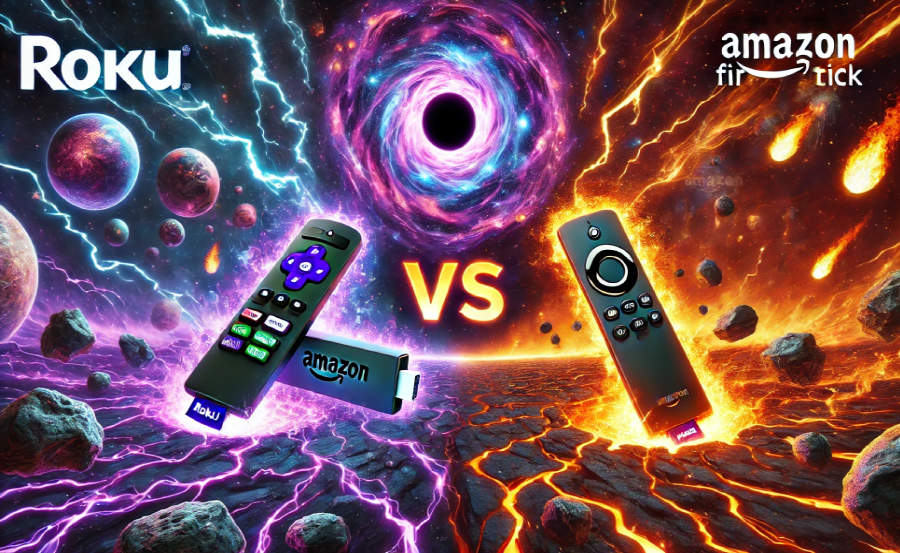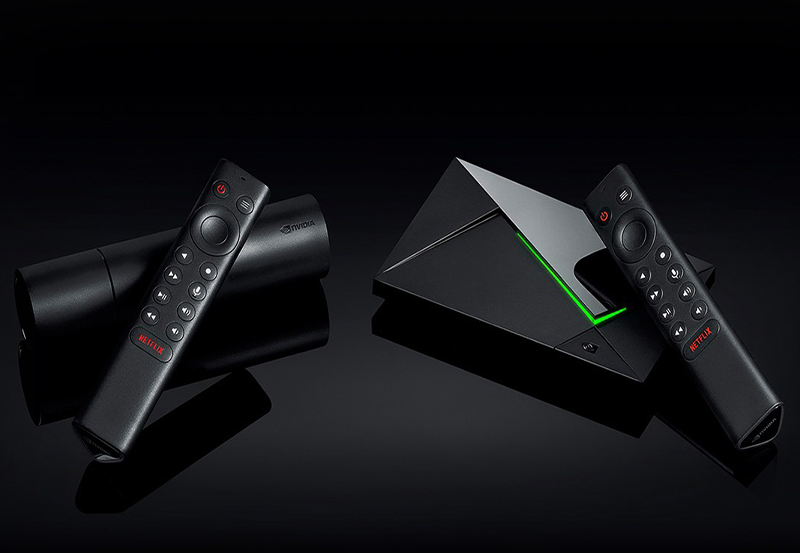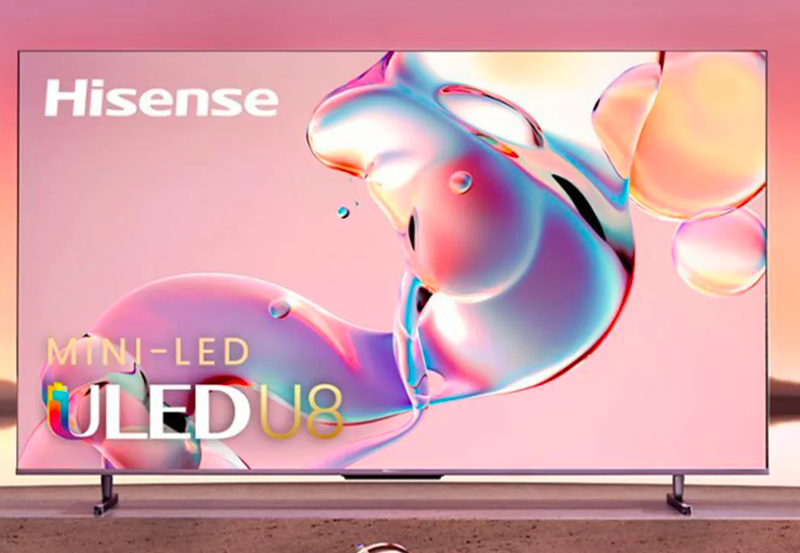The rapid evolution of streaming technology has transformed our living rooms into versatile entertainment hubs. With devices such as Roku and Fire Stick at our disposal, accessing a world of digital content is easier than ever. But with this convenience comes responsibility, especially for parents who must navigate the complex world of parental controls to ensure a safe viewing environment for their children.
A Peek into the World of Streaming Devices
Before diving deep into the specifics of parental controls, we must first understand the devices in question. Roku and Fire Stick have become household names, each offering a unique bouquet of features that cater to diverse entertainment needs.
Roku, celebrated for its simplicity and vast library of channels, is a beacon for users who prefer a straightforward approach to streaming. Meanwhile, Fire Stick, with its Alexa integration and Amazon ecosystem, provides a dynamic and interactive experience.
Pro Insight:
Stream seamlessly across devices with IPTV service in Canada, offering unmatched stability and content variety.
Roku: An Overview
Roku’s interface is intuitive, emphasizing ease of use. Its universal search feature allows users to find content across multiple streaming apps without hassle. It thrives in a diverse market by supporting numerous global IPTV services, enhancing the viewing experience significantly.
Roku’s channel store is its star attraction. Users can explore and add channels swiftly, ensuring that content variety is never a concern. Educational content for children is plentiful, but safeguarding access to only suitable channels remains crucial.
Fire Stick: An Overview
The Fire Stick by Amazon stands out with its voice-controlled remote, powered by Alexa. This feature provides users immediate access to content, allowing a seamless transition between apps with voice command convenience.
Stepping into the world of Fire Stick means stepping into Amazon’s extensive ecosystem. The device offers a personalized experience, tracking your preferences and suggesting shows and movies to suit your taste. Revolutionize your IPTV adventure with Fire Stick’s capacity to support IPTV for Android applications, enhancing your device’s capability beyond traditional boundaries.
Decoding Parental Controls on Roku
Roku’s approach to parental controls is straightforward. However, simplicity does not always equate to limited functionality. Let’s explore how Roku empowers parents to manage children’s viewing habits effectively.
Limitations and Flexibility
Roku’s parental controls primarily operate at the channel level. Parents can restrict access by setting up a PIN for channel addition, ensuring children cannot install or purchase channels without permission. Though this method doesn’t encompass content restriction within channels, it lays the groundwork for curating a child-friendly channel lineup.
Parents can also activate a PIN for viewing restrictions for certain channels, offering a layer of protection against unsuitable content. Despite these controls, Roku lacks a comprehensive filtering system for content within channels, a point of consideration when choosing between these devices.
Setting Up Controls Efficiently
Here’s a concise walkthrough for setting up parental controls on Roku:
- Navigate to Settings from the home menu.
- Select Parental Controls.
- Set up a PIN; ensure it’s memorable yet secure.
- Implement restrictions for channel additions and within-channel content if supported.
Roku’s user-friendly interface ensures a seamless setup process, tailoring your device’s content accessibility to the preferences and needs of your family.
Decoding Parental Controls on Fire Stick
Fire Stick, in contrast, offers more robust tools for managing content accessibility, providing a comprehensive infrastructure for parents conscious about screen time and content safety.
The Fire Stick Advantage
Fire Stick distinguishes itself with in-depth parental control options. These settings not only restrict content by age ratings but also filter inappropriate content on a more granular level. With Fire Stick, controlling what your children watch can extend throughout Amazon Prime Video, apps, and games.
Leveraging Fire Stick’s ability to customize profiles, parents can ensure each family member experiences tailored content suitability, making it a standout choice for a meticulous level of management.
Implementing Effective Controls
The setup on Fire Stick is straightforward yet impactful:
- Access Settings, then Preferences on the Fire Stick home screen.
- Enable parental controls, setting a secure PIN.
- Adjust restrictions for content purchases and app interactions as needed.
- Utilize content rating controls to filter by maturity level.
This setup not only secures content but expands user comfort by allowing parents to adjust controls flexibly based on their children’s evolving maturity levels.
Comparative Insights
When juxtaposing Roku’s simplicity with Fire Stick’s intricate controls, it becomes increasingly evident that the priorities and contexts of individual families greatly influence which device is better suited to their needs.
Usability and Accessibility
Roku’s allure lies in its user-centric design, ensuring anyone can navigate parental controls without a steep learning curve. Its PIN-based approach caters well to environments where time is a premium and resources are primarily family-friendly.
On the other hand, Fire Stick appeals to tech-savvy users who benefit from its expansive control matrix. Its granular settings offer a protective shield over a wide array of content types, appealing to parents seeking to manage not just channels but holistic content exposure.
Content Variance and Control Spheres
Both devices cater to the modern streaming audience but differ in how they manage their extensive content libraries. Fire Stick’s ability to interoperate with IPTV for Android apps revolutionizes streaming capabilities, blending traditional content with versatile access to global IPTV services.
Roku’s straightforward mechanism of channel management may suit families where extension and accessibility of content are predefined and limited to kids’ content already available on the platform. However, where an extensive content universe is desired, Fire Stick stands as a powerful contender.
The Final Verdict
In the ongoing debate of Roku vs. Fire Stick for effective parental controls, the verdict lies not within a binary choice, but rather within the intricate needs of each individual household. Identifying and prioritizing what’s more significant—be it content diversity, ease of use, or control—will ultimately guide the choice.
Savvy users, especially those keen on adapting their streaming environment to every family member’s needs, may find Fire Stick’s proficiencies a perfect match. Meanwhile, households valuing uncomplicated interfaces with basic yet reliable security may lean towards the straightforwardness of Roku.
Embarking on a Personal Streaming Journey
The decision between Roku and Fire Stick is one with no universality, as each offering delivers a unique glimpse into modern-day entertainment. As families explore their options, creating a personalized entertainment landscape, one question remains: Which path aligns with your vision for a safe, entertaining environment?
FAQ: All You Need to Know

Can Roku and Fire Stick be used simultaneously?
Yes, both devices can be connected to different HDMI ports on your TV, allowing you to switch between them effortlessly.
Which device supports better international content?
Fire Stick supports IPTV for Android, widening its content access globally with support for diverse IPTV services, making it an excellent option for international content enthusiasts.
Is it possible to reset parental controls without losing device settings?
Indeed, you can adjust parental controls while maintaining device settings. Simply update your PIN and related preferences without initiating a complete reset.
Do both Roku and Fire Stick support voice search?
Both devices support voice search; however, Fire Stick’s integration with Alexa provides a more robust voice interaction experience.
Are there subscription fees associated with using parental controls?
No additional fees are required for using parental controls on either device, though app and service subscriptions may be necessary depending on the content channels chosen.
Do parental controls differ between app levels on Roku and Fire Stick?
Yes, parental control capabilities can vary between apps, with Fire Stick generally offering more in-depth control at the app level than Roku.
Can I turn off parental controls temporarily and retain settings?
Certainly, both devices allow for temporary adjustment of parental controls, enabling easy reactivation of preferred settings thereafter.
The Future of IPTV: What Gse IPTV Application Offers





